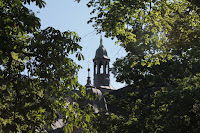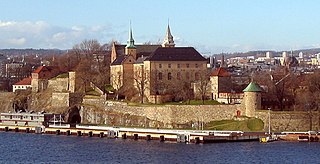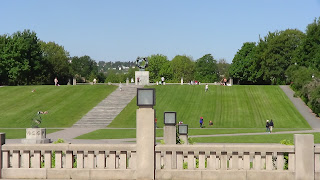How deeply rooted this corrosion has gone can be evaluated from the news from Nashik. Why FM and RBI categorically kept District Co-Op banks out of scenario becomes amply clear. The farmers who may probably be contemplating suicides till recently have suddenly started depositing money in 1000s. Now from where did this money come? It's a common knowledge that these banks are mostly run by political parties in Maharashtra, without exception Rashtrawadi. Its speculated that this money came directly from the directors. So the heavyweight politico the one, who shared platform in Pune the day earlier with PM, came out strongly against the demonetization very next day. Probably realizing where it's going to hurt, a bit late? It's much deeper rot than seen by the eyes.
These are teething
problems for the operation of this magnitude. An educated person must understand
it. For the country of 125 crores, the problems are bound to be there, it depends
on what shades one uses. I am from the era who saw 2 wars, China and Pakistan. In
those days even matchboxes were sold in black. Sugar used to be out of
stock for months together. Once even battery cells were on ration. But we
survived though scathed but survived. Compared to that these hardships are
negligible. English and to a certain extent even vernacular press having vested
interests, is exaggerating them with a definite ulterior motive. English press?
They WANT to see government in poor light. That's their bread and butter And
without being bothered about the real issues they force their own views down
the reluctant gullet as the common consensus.
Take for example this observation:.
The point is also that different banks are behaving differently and have different denominations of cash with them. Bank managers are taking arbitrary calls because there is a cash crunch. New notes are not being printed at the rate they need to. This is what points to a failure of planning and implementation. For fans, this is a temporary inconvenience. For many who need immediate cash, it's a critical failure.
So let's stop giving anecdotal experiences as representative of some general experience. because for every one you give I can give a counter one. There are enough people facing extreme hardship. let's not trivialize them on the altar of faux nationalism and anti-corruption sanctimony.
And let's face the fact - this is unplanned, poorly implemented, and shows the government in a terrible light.
Which fact, what fact, the one these people want to project or the real, real fact? It goes on further:
Intentions without execution is an illusion.
Intentions without execution is an illusion.
Let's see with deeper perspective. Indian common man was/ is never as disciplined as his western counterpart. For such type of extremely enormous operation the subject has to be erudite to at least some extent, can we expect this from the common man on streets from India? He seldom contributes to society as his civic duty but expects more than 100% from the government. It has percolated deep down due to the failed experiment of socialism, where your jobs were secured but it did not depend on your performances. The rot is omnipresent. So why the bank employs should be exceptions? After the entrance of multinational banks the scenario has at least improved a bit, but in the times between 'Nationalization of banks' and 'Entry of Foreign banks', it was pathetic. That's real India or India we got in the legacy from Congress culture.
I won't call him Messiah but somebody with different views, thoughts and methods to execute, is on the horizon so let's cooperate. and Yes we have to start somewhere. Can not bury the head in the sand like an ostrich when a storm comes. This and other measure were/ are long overdue and have to be dealt with as early as possible to have a relatively better society, money and other ethics wise.
This class never likes to bring PM, read Mr Modi in the picture lest they would be labelled as Modi haters so they go around the subject clearly circumventing the fact that ultimately HE is the target! See how they react...
'Why is any comment on demonetization linked to the PM? How does he enter the picture? Is he supposed to do everything? My comment was about messy and unplanned implementation which is someone else's responsibility. Any critique of the haphazard way this has been thrust down our throats is responded with - how I am pseudo, intellectual, higher class etc. '
Surprisingly who so
ever came into my contact in my clinic even from the poorest class never
cribbed about hardships. I deliberately used to broach the subject. Even maidservants coming from nearby slums
for whom many a time I waived of fees because they didn't have enough cash, too
did not crib. This entire overdo definitely lands at the doors of the PM because
that's the purpose at a higher level and your writings are used for that. Now
tell me, hacking of RaGas twitter account is used as a political ploy to avert
cashless rather computerized society. Come on which era are we in now.
Criticism of democratization, Mamata raising doubts about Indian Army,
RaGas and Congress' accounts getting hacked exactly on the dot of time, don't you
see a bigger game in this. The entire play is definitely staged to discredit every
step taken at the governmental level, though the so-called learned class may
understand the intricacies but in finer print read Modi. One can't be that
naive.
Why not have little objectivity? This ordeal is going on for more than 3 weeks. Not a single bank looted so far. Queues are mostly disciplined. Banks and staff are working keeping their heads cool. Not a single common man on the street with a hockey stick in his hands, only tainted politicians and that's all over India Similar type but a natural one in the USA and during Katrina cyclone every shop was looted within 3 days. The chaos is only in the mind of English press, opposition and again I'll say pseudos because again the common man on the street is braving it head-on.


















































